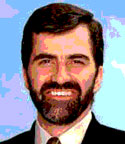[youtube https://www.youtube.com/watch?v=tY0RdXmLGdU&w=480]
It’s certainly hot in the southwestern USA at the moment — a dome of heat has established itself under a persistent high pressure ridge, and temperatures are pushing up towards all-time highs. Wildfires are running out of control. One caused the tragic death of 19 firefighters at Yarnell Hill in Arizona yesterday. One more extreme weather event to add to this year’s growing list, and as with most of the others, there’s a clear sign of a link with rapid climate change. That heat dome is being held in place by a large, slow-moving northward loop in the jetstream — and that jetstream pattern is beginning to look very much like the characteristic fingerprint of rapid warming in the northern hemisphere, as Jennifer Francis explains in this video, recorded at a Climate Desk event in Washington last month. It’s just about the clearest explanation of what’s going on that I’ve encountered — particularly in her description of why the jetstream exists in the first place, and why warming is changing the way it behaves. If you want to understand what’s going on, you have to watch this.
There’s a full recording of the Climate Desk event here, including a talk by Weather Channel meteorologist Stu Ostro. Ostro used to be a confirmed sceptic, but began to see changes in weather patterns that he traced back to the effects of warming — specifically, an increase in the “thickness” of the atmosphere, the very thing that’s driving the changes in jetstream behaviour.

 Forget the Gore Effect ((
Forget the Gore Effect ((